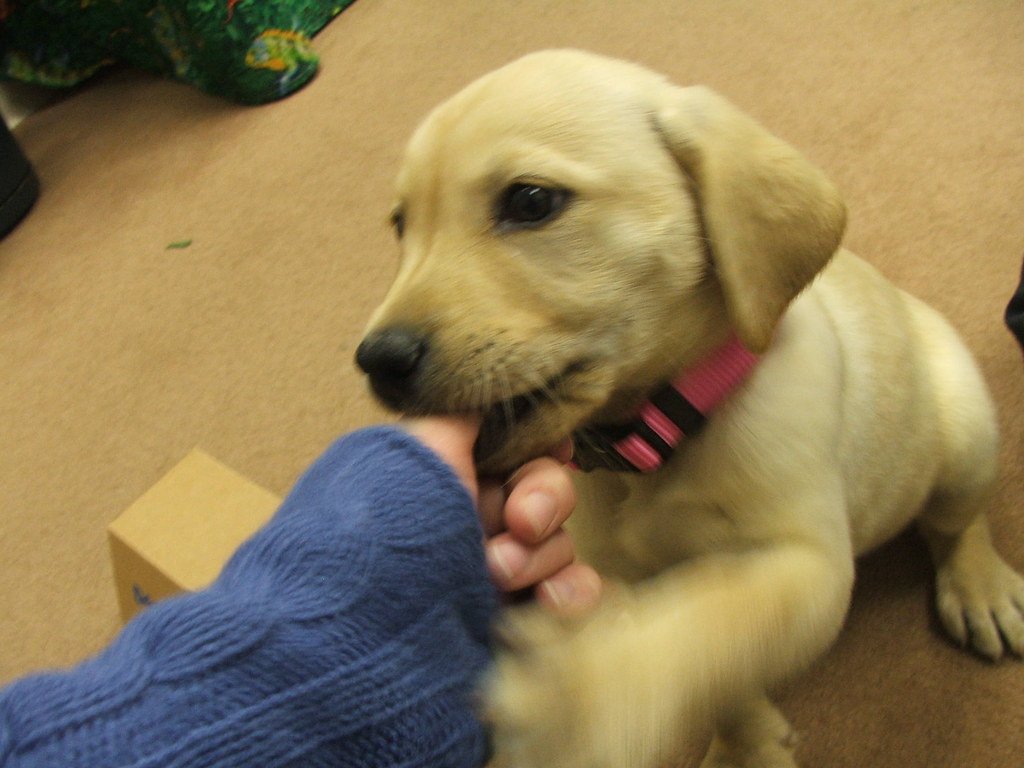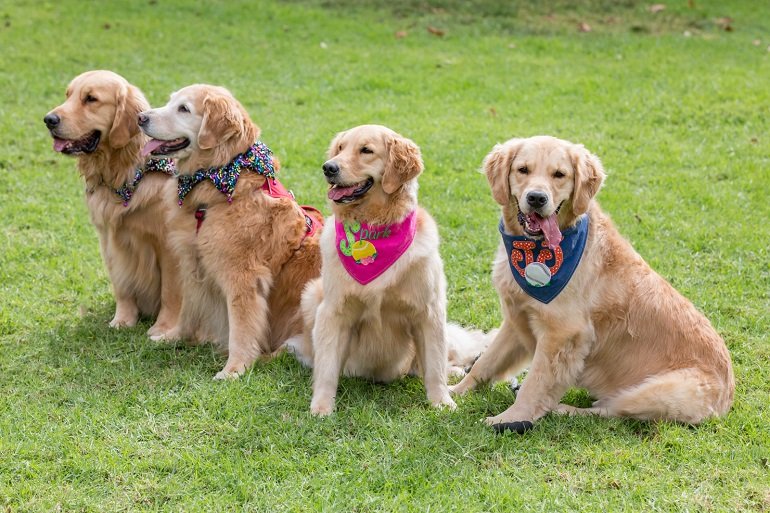Welcoming a new furry friend into your home is an undoubtedly joyful experience. Those tiny paws, wagging tails, and endless energy bring a renewed sense of warmth and happiness. However, if you already have other pets in your household, this joyous occasion can sometimes be accompanied by a few challenges. Integrating a puppy into a multi-pet household requires careful consideration, patience, and a sprinkle of creativity. From establishing a harmonious routine to teaching socialization skills, this article will guide you on how to navigate the exciting journey of training a puppy in a multi-pet environment.
Table of Contents
- Welcoming a New Puppy into a Multi-Pet Household: Key Considerations to Ensure a Smooth Transition
- Understanding the Dynamics: Assessing the Personalities and Needs of Each Pet in the Household
- Establishing Boundaries: Introducing Proper Supervision and Designating Separate Spaces
- Building Positive Relationships: Socialization Techniques and Activities for Harmonious Coexistence
- Training Strategies: Teaching Basic Commands and Addressing Specific Challenges in a Multi-Pet Environment
- Q&A
- To Conclude

Welcoming a New Puppy into a Multi-Pet Household: Key Considerations to Ensure a Smooth Transition
Welcoming a New Puppy into a Multi-Pet Household
Introducing a new puppy into a multi-pet household can be an exciting and rewarding experience for everyone involved. However, it’s important to ensure a smooth transition for all furry family members. Here are some key considerations to help harmonize and create a loving environment:
- Gradual Introductions: Allow your existing pets to get used to the new puppy’s presence slowly. Start with short, supervised meetings in a neutral space. Gradually increase the duration and frequency of interactions, always prioritizing safety and positive experiences.
- Positive Reinforcement: Reward both the puppy and existing pets for calm and friendly behavior during introductions. Use treats, praise, and petting to create positive associations, helping to build trust and reduce anxiety.
- Establish Separate Spaces: Provide separate areas for each pet to retreat to, ensuring they have their own space and belongings. This helps prevent territorial disputes and grants pets a safe spot when they need some alone time.
- Consistent Routine: Maintain a consistent daily routine for all pets, including feeding, grooming, and playtime. This establishes predictability and stability, reducing stress and helping pets adjust to new dynamics more easily.
- Individual Attention: Remember to spend quality time with each pet individually, ensuring they still feel loved and valued. This helps prevent feelings of jealousy or neglect while reinforcing the bond between you and your existing pets.
- Patience and Supervision: Be patient and allow time for your pets to adapt to the changes. Supervise interactions, especially during the initial weeks, to prevent any potential conflicts or accidents. Keep an eye on body language, making sure all pets are comfortable and adjusting positively.
By considering these key aspects, you’ll be on your way to fostering a harmonious environment where your new puppy seamlessly integrates into your multi-pet household, enjoying a lifetime of love and companionship.

Understanding the Dynamics: Assessing the Personalities and Needs of Each Pet in the Household
When it comes to maintaining a harmonious household filled with pets, it’s essential to understand the unique dynamics between each furry companion. Assessing their personalities and individual needs can contribute to a happy and peaceful environment for all.
One key aspect of understanding the dynamics is recognizing the distinct personalities that exist among your pets. Some may be outgoing, craving attention and interaction, while others might be more reserved, appreciating their personal space. By identifying their different personalities, you can tailor your approach to ensure that each pet feels understood and catered for.
To assess the personalities and needs of each pet, you can utilize a few methods:
- Observation: Spend quality time observing your pets’ behavior. Take note of their reactions to various stimuli, such as playtime, feeding, or interaction with other household members.
- Interaction: Engage with each pet individually. Discover what activities they enjoy or dislike, what toys they prefer, or how they respond to affection.
- Consultation: Seek guidance from a professional, such as a veterinarian or animal behaviorist, who can provide valuable insights into your pets’ personalities and advise on any specific needs or potential conflicts.
By assessing the personalities and needs of each pet in your household, you’ll be able to create an environment where their unique characteristics are appreciated and catered to. This understanding fosters a sense of inclusivity and harmony, ultimately enriching the lives of your beloved furry family members.

Establishing Boundaries: Introducing Proper Supervision and Designating Separate Spaces
Supervision is key: When it comes to establishing boundaries within a shared space, proper supervision plays a crucial role. It ensures that everyone’s needs are met without stepping on each other’s toes. By designating someone responsible for overseeing the activities and interactions within the space, conflicts can be minimized and a harmonious atmosphere can be maintained.
Separate spaces for enhanced productivity: Designating separate areas within a shared space is essential for maintaining focus and fostering productivity. Whether it’s a physical partition or simply marking out specific workstations, creating distinct spaces helps individuals feel a sense of personal ownership and allows for greater concentration. By doing so, it becomes easier to maintain a level of privacy while encouraging collaboration at the same time.
Establishing guidelines: Along with supervision and separate spaces, clear guidelines are imperative for cohesive functioning. Communicate the expectations and limitations to everyone involved, and encourage open dialogue for suggestions and concerns. By outlining rules regarding noise levels, shared resources, and personal boundaries, it ensures a respectful and considerate environment for all.
In conclusion, through proper supervision and designating separate spaces, boundaries can be effectively established within a shared environment. This not only promotes productivity and focus, but also helps maintain harmonious interactions and a sense of personal ownership. By implementing guidelines and fostering open communication, a shared space can become a thriving ecosystem for collaboration and individual growth.

Building Positive Relationships: Socialization Techniques and Activities for Harmonious Coexistence
Creating and fostering positive relationships is essential for a harmonious coexistence among individuals and communities. By implementing effective socialization techniques and engaging in various activities, we can cultivate an environment that encourages mutual respect, understanding, and collaboration.
1. Empathy exercises: Empathy is the foundation of positive relationships. Encourage individuals to put themselves in someone else’s shoes, helping them understand different perspectives and feelings. Organize group discussions or role-playing activities to practice active listening, validating emotions, and showing compassion.
2. Team-building activities: Working together towards a common goal strengthens relationships and promotes unity. Arrange team-building activities like problem-solving games, group projects, or outdoor challenges. Such activities not only enhance communication and cooperation but also foster a sense of camaraderie and trust.
3. Cultural exchange events: Celebrating diversity and embracing different cultures can significantly contribute to positive relationships. Organize cultural exchange events where individuals can share traditions, cuisines, and personal experiences. This provides an opportunity for everyone to learn from one another, appreciate differences, and build bridges between communities.
In conclusion, building positive relationships requires intentional efforts and the implementation of socialization techniques and engaging activities. By practicing empathy, participating in team-building activities, and promoting cultural exchange, we can create an inclusive environment where harmonious coexistence becomes a reality.
Training Strategies: Teaching Basic Commands and Addressing Specific Challenges in a Multi-Pet Environment
Training Strategies
Teaching Basic Commands
In a multi-pet environment, teaching basic commands can be a fun and rewarding experience for both you and your furry companions. Here are a few strategies that can help you establish a solid foundation of obedience:
- Individual sessions: Spend quality one-on-one time with each pet to focus on their specific needs and abilities. This will help prevent distraction and ensure better learning outcomes.
- Consistency: Use the same verbal cues and hand signals for each command across all pets, reinforcing the association between the cue and the desired behavior.
- Reward-based training: Positive reinforcement, such as treats, praise, or playtime, encourages your pets to repeat the desired behavior and strengthens their bond with you.
- Short sessions: Keep training sessions short and frequent to maintain engagement and prevent boredom or frustration.
Addressing Specific Challenges
Training multiple pets comes with its own set of challenges. Here are some strategies to address specific challenges in a multi-pet environment:
- Differentiation: Recognize and address the unique personalities and temperaments of each pet, adapting your training methods accordingly.
- Separate training areas: Set up separate spaces for each pet during training to minimize distractions and ensure better focus.
- Group training: Once individual obedience is established, gradually introduce group training to encourage cooperative behavior and socialization among your pets.
- Time management: Dedicate specific time slots for training each pet to avoid creating feelings of inequality or unfairness.
Q&A
### How do I introduce a new puppy to my existing pets?
Start by allowing your pets to sniff each other’s scent through a closed door. Once they’re acquainted with each other’s smell, you can gradually introduce them in a controlled environment, with each interaction being short and positive.
### Should I feed my puppy separately from my other pets?
Yes, it’s recommended to feed your puppy separately to avoid any potential food guarding or aggression. This will also help you monitor their individual eating habits and ensure everyone gets the appropriate amount of food.
### How can I prevent my puppy from chasing my other pets?
Teach your puppy a solid recall command so you can redirect their attention from chasing. Additionally, provide plenty of physical and mental stimulation to tire them out, as well as give your other pets spaces where they can retreat from the puppy when needed.
### How do I prevent my puppy from fighting or being overly rough with my other pets?
Supervise all interactions between your puppy and other pets, and intervene when necessary. Utilize positive reinforcement to reward calm and gentle behavior, while redirecting any inappropriate behavior with a firm “no” and providing an alternative, acceptable activity.
### Is it helpful to train my puppy alongside my other pets?
Training your puppy alongside other pets can actually be beneficial. It allows them to learn from their peers and improves their socialization skills. However, make sure to give each pet individual attention to prevent competition or confusion during training sessions.
To Conclude
As we bid adieu to this enlightening journey of training a puppy in a multi-pet household, we hope you embark on this endeavor with optimism and a sense of adventure. Remember, dear reader, that each pet and every household is unique, so be prepared for some tail-wagging triumphs and a few pawprint-covered hurdles along the way.
Just like a conductor orchestrating a symphony, you hold the power to create harmony amongst your furry friends. Take the time to understand the individual needs, personalities, and boundaries of each beloved companion in your home. Through patience, consistency, and gentle guidance, you will witness a beautiful transformation as the bonds between your pets deepen, leading to a joyful coexistence and frolicking moments filled with play and camaraderie.
In the ballet of training, communication is key. Keep in mind that verbal cues, positive reinforcements, and non-verbal signals can weave a web of understanding between your pets. With practice, they will learn to respond to your cues, and their actions will synchronize like a graceful dance.
Embrace the power of routine, dear reader, as it will lay the foundation for success. Establishing regular feeding, walking, and playtime schedules will not only help your pets adapt but also instill a sense of security within them. Remember, a balanced timetable will benefit both the rookie pup and the seasoned veterans, ensuring that no one feels left out or neglected.
As you embark on the journey of training a puppy in a multi-pet household, be prepared to witness love, friendship, and hilarious antics unfold before your very eyes. Cherish the moments of triumph, big or small, for it is through these milestones that you’ll see the true magic unfold—a harmonious symphony of wagging tails, purrs, and barks that symphonizes the joyous camaraderie within your furry family.
So, dear reader, seize the leash and embark on this incredible experience. As you guide your puppy and lovingly rally your furry troops, let your patience, compassion, and understanding be your guiding star. May your home resonate with the melody of love, peace, and unity as your pets become the very best versions of themselves.
Remember, the journey is ongoing, and there is always something new to learn and discover. With persistence, devotion, and a sprinkle of whimsy, your puppy will thrive in this multi-pet adventure, and your household will forever be filled with the warm embrace of true companionship.
As an affiliate, my content may feature links to products I personally use and recommend. By taking action, like subscribing or making a purchase, you’ll be supporting my work and fueling my taco cravings at the same time. Win-win, right?
Want to read more? Check out our Affiliate Disclosure page.